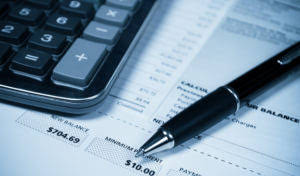
This makes it ideal for assets that typically lose the most value during the first years of ownership. Unlike other depreciation methods, it’s not too challenging to implement. To get a better grasp of double declining balance, spend a little time experimenting with this double declining balance calculator. It’s a good way to see the formula in action—and understand what kind of impact double declining depreciation might have on your finances. 1- You can’t use double declining depreciation the full length of an asset’s useful life. Since it always charges a percentage on the base value, there will always be leftovers.

Do you own a business?
Since we already have an ending book value, let’s squeeze in the 2026 depreciation expense by deducting $1,250 from $1,620. The beginning book value is the cost of the fixed asset less any depreciation claimed in prior periods. Under the DDB method, we don’t consider the salvage value in computing annual depreciation charges. Instead, we simply keep deducting depreciation until we reach the salvage value. The current year depreciation is the portion of a fixed asset’s cost that we deduct against current year profit and loss. The accounting concept behind depreciation is that an asset produces revenue over an estimated number of years; therefore, the cost of the asset should be deducted over those same estimated years.

Comparing DDB and Straight-Line Methods

Similarly, compared to the standard declining balance method, the double-declining method depreciates assets twice as quickly. Let’s assume that a retailer purchases fixtures on January 1 at a cost of $100,000. It is expected that the fixtures will have no salvage value at the end of their useful life of 10 years. Under the straight-line method, the 10-year life means the asset’s annual depreciation will be 10% of the asset’s cost. Under the double declining balance method the 10% straight line rate is doubled to 20%.
- Double declining balance is sometimes also called the accelerated depreciation method.
- While depreciation is used for calculating the descending costs of tangible assets, Amortization is used in the case of intangible assets.
- Thus, an increase in the cost of repairs of each subsequent year is compensated by a decrease in the amount of depreciation for each subsequent year.
- This is the table that shows the depreciation account of the balance sheet for 5 years of the asset’s life.
- It is therefore specifically important for accountants to understand the different methods used in depreciating assets as this constitutes an important area to be taken care of by accounting professionals.
- Since public companies are incentivized to increase shareholder value (and thus, their share price), it is often in their best interests to recognize depreciation more gradually using the straight-line method.
Bonus Depreciation: A Simple Guide for Businesses
Aside from DDB, sum-of-the-years digits and MACRS are other examples of accelerated depreciation methods. They also report higher depreciation in earlier years and lower depreciation in later years. By front-loading depreciation expenses, it offers the advantage of aligning with the actual wear gross vs net and tear pattern of assets. This not only provides a more realistic representation of an asset’s condition but also yields tax benefits and helps companies manage risks effectively.

Accounting made for beginners
- Double declining balance depreciation is an accelerated depreciation method that charges twice the rate of straight-line deprecation on the asset’s carrying value at the start of each accounting period.
- Learn how to build, read, and use financial statements for your business so you can make more informed decisions.
- As you can see, both methods end up with the same total accumulated depreciation.
- In the first year of service, you’ll write $12,000 off the value of your ice cream truck.
- However, one counterargument is that it often takes time for companies to utilize the full capacity of an asset until some time has passed.
In summary, understanding double declining balance depreciation is crucial for making informed financial decisions. It’s a method that can provide significant benefits, especially for assets that depreciate quickly. The DDB method contrasts sharply with the straight-line method, where the depreciation expense is evenly spread over the asset’s useful life. The choice between these methods depends on the nature of the asset and the company’s financial strategies.
- Standard declining balance uses a fixed percentage, but not necessarily double.
- It is a bit more complex than the straight-line method of depreciation but is useful for deferring tax payments and maintaining low profitability in the early years.
- The depreciation expense recorded under the double declining method is calculated by multiplying the accelerated rate, 36.0% by the beginning PP&E balance in each period.
- These tools can automatically compute depreciation expenses, adjust rates, and maintain depreciation schedules, making them invaluable for businesses managing multiple depreciating assets.
- Understanding how to calculate and apply this method can provide valuable insights into asset management and financial planning.
Because most accounting textbooks use double declining balance as a depreciation Bookkeeping for Chiropractors method, we’ll use that for our sample asset. The double declining balance method accelerates depreciation, resulting in higher expenses in the early years, while the straight line method spreads the expense evenly over the asset’s useful life. Each method has its advantages, suited to different types of assets and financial strategies. Whether you’re a seasoned finance professional or new to accounting, this blog will provide you with a clear, easy-to-understand guide on how to implement this powerful depreciation method. We’ll explore what the double declining balance method is, how to calculate it, and how it stacks up against the more traditional Straight Line Depreciation method.
Comprehensive Guide to Inventory Accounting
Our mission is to equip business owners with the knowledge and confidence to make informed decisions. Bonus depreciation can deliver serious tax savings for double declining balance method your small business. Don’t worry—these formulas are a lot easier to understand with a step-by-step example. They have estimated the machine’s useful life to be eight years, with a salvage value of $ 11,000.
